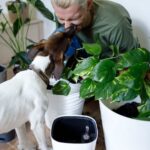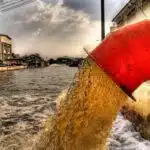Septic systems are a crucial component of any residential or commercial property that is not connected to a public sewer system. One of the most important elements of a septic system is the drain field, which is responsible for filtering and dispersing wastewater into the surrounding soil. However, many property owners may not be aware that the plants surrounding their drain field can have a significant impact on the health and longevity of their septic system.
As an expert in septic system design and maintenance, it is my duty to educate property owners on the importance of selecting septic-safe plants for their landscaping. In this article, we will explore the difference between septic safe and unsafe plants near a drain field, as well as provide practical tips for selecting appropriate vegetation. By understanding how your landscaping choices can impact your septic system, you can ensure that your property remains healthy and functional for many years to come.
Understanding The Importance Of Drain Field Landscaping
As the old adage goes, prevention is better than cure. This is especially true when it comes to septic systems. One of the most important aspects of maintaining a healthy septic system is proper drain field landscaping. Designing your landscape with your septic system in mind can prevent costly repairs and prolong the lifespan of your system.
When designing your landscape around your drain field, there are a few tips to keep in mind. First, be sure to locate and mark the boundaries of your drain field before beginning any landscaping project. This will prevent accidental damage to the system during excavation or planting. Second, avoid planting trees or large shrubs near the drain field as their roots can penetrate and damage the pipes.
Plant selection is also crucial when it comes to drain field landscaping. Choose plants that have shallow root systems and low water requirements, such as ornamental grasses, groundcovers, and flowers like daisies or marigolds. These types of plants are less likely to cause damage or create clogs in your septic system. In addition, avoid using fertilizers or pesticides near your drain field as they can harm beneficial bacteria that help break down waste in the system.
As we delve into how roots can damage your septic system, it’s important to keep these designing tips and plant selection strategies in mind for a healthy and long-lasting septic system.
How Roots Can Damage Your Septic System
Roots Can Damage Your Septic System
Root invasion prevention has become an essential aspect of maintaining the longevity of your septic system. Many homeowners fail to realize that tree roots can invade their septic system’s drain field, causing significant damage that can lead to costly repairs or complete replacement. The destruction is usually caused by trees and shrubs with aggressive root systems that grow beyond their planting area and into the septic drainage field.
The invasion of roots in the septic system creates a blockage in the pipes, which hinders wastewater’s flow and its necessary absorption into the soil. As a result, the sewage backup occurs inside your home, causing unpleasant odors and health hazards. If left unaddressed, root intrusion can cause irreversible damage to your septic system’s soil treatment area, leading to costly repairs or even replacement.
To avoid these issues, it is crucial to be mindful of what you plant near your septic system drain field. By avoiding aggressive plants with extensive root systems, you can significantly reduce the risk of root intrusion in your septic system. Regular maintenance and inspections by a professional are also essential for identifying any potential problems and addressing them before they become major concerns that could threaten the longevity of your septic system.
Here are five reasons why preventing root invasion is critical:
- Root intrusion leads to blockages that prevent wastewater from flowing into the drain field.
- Blockages cause sewage backups inside homes, resulting in unpleasant odors and health hazards.
- Aggressive plant species’ roots grow beyond their planting area and invade the septic drainage field.
- Failure to address root intrusion can lead to irreversible damage and costly repairs or replacement.
- Preventing root invasion ensures optimal functioning of your septic system while reducing repair costs associated with damage caused by invasive roots.
This knowledge underscores how important it is to take proactive steps towards preventing root intrusion in your septic system. In contrast, ignoring the problem can lead to severe and costly consequences. In the subsequent section, we’ll discuss the characteristics of septic safe plants that you should consider when landscaping near your septic system drain field.
Characteristics Of Septic Safe Plants
A septic system is like a delicate ecosystem that requires balance to function properly. Just as a garden needs the right amount of sun, water, and nutrients to thrive, so too does a septic system need the right type of plants to avoid any damage or malfunction. Choosing septic safe plants is essential for maintaining the integrity of your drain field.
Planting techniques play a key role in ensuring that your plants are not only aesthetically pleasing but also safe for your septic system. It is important to avoid planting trees and shrubs too close to the drain field as their roots can cause damage by penetrating pipes and disrupting the flow of wastewater. Instead, focus on planting low-maintenance ground covers or grasses that will absorb excess moisture and nutrients from the soil without interfering with the system’s functionality.
Soil requirements are another crucial aspect to consider when selecting septic safe plants. Soil composition plays an integral part in determining which plants will thrive near your drain field without causing any harm. To ensure proper drainage and prevent soil compaction, it is recommended to use sandy loam or loamy sand soils when planting near your septic system. By following these guidelines, you can create a beautiful landscape while also protecting your septic system from potential harm caused by invasive plant roots or excessive water absorption.
As we have seen, choosing the right kind of plants for your septic system requires careful consideration of planting techniques and soil requirements. By selecting septic safe plants that complement both aspects, you can ensure that your drain field remains healthy and functional for years to come. In our subsequent section, we’ll explore some characteristics of septic unsafe plants that should be avoided at all costs to maintain a healthy ecosystem around your home.
Characteristics Of Septic Unsafe Plants
In the previous section, we discussed the characteristics of septic safe plants that can be grown near a drain field. Now, it is essential to understand the characteristics of septic unsafe plants that should not be planted near the drain field. These plants can cause harm to your septic system and make it less effective over time.
One significant characteristic that makes a plant unsafe for a septic system is its toxicity level. Toxic plants release chemicals into the soil that can kill beneficial bacteria in your septic system, leading to clogs and backups. Some common toxic plants include azaleas, rhododendrons, daffodils, and lilies. If you have these plants growing close to your drain field or on top of your septic tank, they could be causing harm without you even realizing it.
Another characteristic that makes a plant unsafe for your septic system is its ability to cause soil compaction. Soil compaction occurs when the ground becomes too dense and does not allow water or air to flow through it properly. This can lead to drainage problems and make it harder for your septic system to process waste effectively. Some examples of plants that can cause soil compaction include bamboo, creeping juniper, and sweet woodruff.
- Sub-list:
- To avoid planting toxic plants near your drain field:
- Check the toxicity level of each plant before planting.
- Choose non-toxic alternatives instead.
- To avoid planting plants that cause soil compaction:
- Opt for smaller root systems.
- Plant only in well-draining soil.
It is crucial to choose septic safe plants when landscaping around your drain field. By avoiding toxic and compacting plants, you can ensure the longevity and effectiveness of your septic system. In the next section, we will discuss some benefits of using septic safe plants in more detail.
Benefits Of Using Septic Safe Plants
What are the benefits of using septic safe plants near a drain field? Choosing appropriate plants can greatly enhance the performance and longevity of your septic system. Here are some benefits to consider:
Firstly, septic safe plants have a shallow root system that does not interfere with the drain field’s absorption capacity. Unlike deep-rooted plants, shallow-rooted ones do not invade or clog the drain field’s perforated pipes. This allows the wastewater to percolate through the soil easily and get treated naturally without backing up.
Secondly, septic safe plants can improve soil structure and quality around the drain field. Plants absorb excess water and nutrients from the soil, reducing soil saturation and preventing bacterial growth that can cause clogging in the drain field. The roots also help to break up compacted soil, creating channels for oxygen and water to penetrate deeper into the ground.
Lastly, septic safe plants provide aesthetic value and habitat for beneficial insects and wildlife that contribute to maintaining a healthy ecosystem. Some examples of septic safe plants include flowering shrubs like hydrangeas, herbs like rosemary or sage, native grasses like switchgrass or bluestem, and ornamental trees like dogwoods or redbuds.
| Types of Septic Safe Plants | Characteristics |
|---|---|
| Hydrangeas | Shallow root system; attractive blooms |
| Rosemary or Sage | Drought-tolerant herbs; fragrant |
| Switchgrass or Bluestem | Native grasses; erosion control |
| Dogwoods or Redbuds | Ornamental trees; vibrant foliage |
In summary, choosing septic-safe plants has many benefits beyond just aesthetics. They promote proper functioning of your septic system by not interfering with its absorption capacity while improving soil quality around it. By selecting appropriate plants for your landscaping needs, you can reduce maintenance costs while enjoying a beautiful outdoor space that supports a healthy ecosystem. In the next section, we will discuss the risks of using septic unsafe plants and how they can harm your septic system.
Risks Of Using Septic Unsafe Plants
Bacteria contamination is a risk when septic unsafe plants are planted too close to a drain field, as the roots of these plants can break through the pipes, allowing bacteria to enter the septic system.
Soil compaction is another issue that can arise when septic unsafe plants are planted too close to a drain field, as the roots of the plants can compact and harden the soil, making it more difficult for water to pass through the septic system.
Root damage is an additional risk when septic unsafe plants are planted too close to a drain field, as the roots of these plants can clog the pipes, leading to a decrease in the efficiency of the septic system.
Additionally, septic unsafe plants can also lead to a decrease in the nutrient content of the soil, as the roots of these plants can draw out essential minerals and other nutrients.
It is important to consider the potential risks when selecting plants to plant near a drain field, and to consider choosing septic safe plants instead of septic unsafe plants.
Furthermore, it is important to ensure that there is a sufficient distance between any septic unsafe plants and the drain field, in order to avoid any potential risk of contamination or damage.
Bacteria Contamination
As a septic system expert, it is important to understand the risks associated with using septic unsafe plants near a drain field. One major risk is bacteria contamination. Septic systems rely on soil absorption to filter and treat wastewater before it enters groundwater or nearby bodies of water. However, some plants can introduce harmful bacteria into the soil that can disrupt this natural process.
Bacteria contamination occurs when septic unsafe plants introduce pathogens into the soil that can cause illness or disease. These pathogens can come from animal waste, human waste, or other sources of organic matter. When these pathogens enter the soil near a drain field, they can spread quickly and contaminate nearby water sources. This not only poses a risk to public health but can also harm local wildlife and ecosystems.
To prevent bacteria contamination from septic unsafe plants, it is crucial to choose plants that are safe for use around a drain field. Native grasses and wildflowers are excellent choices because they have deep root systems that help absorb excess moisture and nutrients from wastewater. Additionally, these types of plants are naturally resistant to pest infestations and diseases, reducing the need for chemical treatments that could further harm the ecosystem. By choosing septic safe plants, homeowners can protect their property’s value while also ensuring the health and safety of their community and environment.
Overall, bacteria contamination is just one of many risks associated with using septic unsafe plants near a drain field. As a responsible homeowner or business owner with a septic system, it is essential to prioritize safety by choosing plants wisely and practicing proper maintenance techniques. By working with an experienced septic system consultant or expert, you can ensure that your property remains healthy and functional for years to come without posing any unnecessary risks to yourself or others in your community.
Soil Compaction
Another risk associated with using septic unsafe plants near a drain field is soil compaction. Soil compaction occurs when the soil becomes compressed, reducing pore space and making it difficult for water to drain properly. This can lead to backup and clogging of the drain field, which can cause serious damage to the septic system. Preventing soil compaction is crucial for maintaining a healthy and functional septic system.
The use of heavy equipment, foot traffic, and even some types of plants can contribute to soil compaction. To prevent this problem from occurring, it is essential to choose septic safe plants that have deep root systems that can help aerate the soil for better drainage. Additionally, homeowners should avoid parking or driving heavy vehicles over the drain field area to reduce soil compression.
Aerating the soil regularly is also an effective way of preventing soil compaction. By creating small holes in the soil, air and water can penetrate deeper into the ground, allowing for better nutrient absorption and promoting healthier plant growth. Aerating should be done by a professional who understands how to perform this task without damaging any part of the septic system or compromising its function. With these preventive measures in place, homeowners can ensure that their property remains safe and functional while also protecting their environment from harm.
Root Damage
Septic systems are an essential part of any property that is not connected to the municipal sewage system. They rely on a drain field to filter and treat wastewater before it is released back into the environment. However, many homeowners unknowingly put their septic systems at risk by using septic unsafe plants near the drain field. One of the risks associated with this practice is root damage.
Preventing root damage is crucial for maintaining a healthy and functional septic system. Signs of root intrusion include slow-draining sinks or toilets, gurgling sounds coming from drains, and foul odors emanating from the drain field area. To prevent this problem from occurring, homeowners should choose septic safe plants that have shallow roots or deep taproots that do not pose a threat to the septic system’s pipes.
Homeowners can also take preventive measures such as installing barriers around the drain field area to prevent plant roots from growing too close to the pipes. Additionally, regular maintenance checks by a professional can help detect any signs of root intrusion before they become severe problems. Taking these precautions will help homeowners protect their property while keeping their septic system functioning optimally for years to come.
Factors To Consider When Choosing Plants For Your Drain Field
When choosing plants for your drain field, it is important to consider several factors. One of these factors is the ability of the plants to withstand drought conditions. Choosing drought-resistant plants can help prevent water from being absorbed too quickly by the soil, which can lead to drainage problems.
Another factor to consider is creating a natural habitat around the drain field. This can help promote healthy soil and plant growth, while also preventing erosion and other issues that can arise from poorly designed landscapes. By incorporating diverse plant species and creating a balanced ecosystem, you can ensure that your drain field remains healthy and functional for years to come.
Overall, there are many different factors to consider when selecting plants for your drain field. From choosing drought-resistant varieties to creating a natural habitat that promotes healthy soil and plant growth, there are many steps you can take to ensure optimal performance from your septic system. In the next section, we will discuss some of the top septic-safe plants for landscaping, providing valuable insights into how you can create a beautiful landscape that also supports your septic system’s needs.
Top Septic Safe Plants For Landscaping
After considering the factors involved in choosing plants for your drain field, it is important to understand which plants are safe for use and which should be avoided. Choosing drought-resistant plants is a good place to start, as these species can withstand the dry conditions that often occur around septic systems. Incorporating native species into your landscaping not only helps with water conservation but also provides a natural habitat for local wildlife.
When selecting plants for your drain field, it is essential to avoid those that have extensive root systems or invasive tendencies. Trees and shrubs with aggressive roots can cause damage to septic system components and even infiltrate the drain field itself, causing blockages and backups. Additionally, using fertilizers or chemicals near your septic system can negatively impact its performance and harm nearby plant life.
To ensure the longevity of your septic system while maintaining an aesthetically pleasing landscape, consider planting top septic-safe options such as low-maintenance grasses, herbs, and groundcovers. These options require minimal upkeep and pose little threat to your system’s function. By being mindful of the type of vegetation you choose to incorporate into your landscaping, you can protect both your septic system’s performance and the surrounding environment.
Moving forward, it is crucial to understand which plants should be avoided near your drain field to prevent any potential issues down the line. These include fast-growing trees like willows or poplars, invasive species like bamboo or kudzu, and any plant that requires frequent watering or large amounts of fertilizer. By avoiding these problematic options and instead opting for drought-resistant, low-maintenance species, you can confidently create a beautiful landscape without compromising the functionality of your septic system.
Plants To Avoid Near Your Drain Field
Trees should generally be avoided near a drain field since their roots can grow deep and cause damage to the system. Shrubs, vines, and deep-rooted plants should also be avoided to prevent root infiltration. Bushes, grasses, perennials, succulents, annuals, vegetables, and fruits should be planted with caution and at a safe distance from the drain field. Large plants, invasive species, shade-tolerant plants, and drought-tolerant plants should also be avoided to prevent potential damage to the drain field system.
Trees
When it comes to planting trees near a drain field, it is crucial to choose the right species. Some tree species are septic safe, while others can cause extensive damage to your drain field system. Comparing tree species is essential to determine which types of trees are safe and which ones should be avoided. For example, evergreen trees like pine and spruce have shallow root systems that can quickly infiltrate the drain field pipes and cause blockages. On the other hand, deciduous trees like maple and oak tend to have deeper root systems that are less likely to interfere with the drain field.
Another important consideration when planting trees near your drain field is proper spacing. Trees that are too close to the drain field can cause significant damage by interfering with the absorption process of wastewater. It is recommended that you plant septic-safe trees at least 50 feet away from your drain field system. However, if you must plant a tree closer than 50 feet, be sure to select a smaller tree species that will not grow too large or have invasive roots.
In conclusion, choosing the right tree species and proper spacing are critical factors in preventing damage to your septic system’s drain field. By selecting septic-safe trees and ensuring they are planted at a safe distance from the drainage area, you will help ensure your system functions correctly for many years to come. As a septic system expert/consultant, I highly recommend consulting with a professional for guidance on selecting appropriate plants for your property’s unique conditions.
Shrubs
When it comes to planting around your drain field, it’s not just trees that you need to be mindful of. Shrubs can also pose a risk to the health and functionality of your septic system. Some shrubs have invasive root systems that can cause blockages or damage to drain field pipes, while others may absorb too much moisture from the soil, preventing proper wastewater absorption. As a septic system expert/consultant, it is my duty to inform you about the best shrubs to plant and those you should avoid near your drain field.
The best shrubs for planting near your septic system are those with shallow roots and low water requirements. Some examples include boxwood, holly, juniper, and yew. These shrubs have fibrous root systems that do not penetrate deep into the soil and are unlikely to cause any harm to your drain field pipes. Additionally, these shrubs require little water, making them ideal for areas with limited access to water sources.
On the other hand, there are several shrubs you should avoid planting near your septic system. These include species such as bamboo, cypress, rhododendron, and viburnum. These plants have aggressive root systems that can damage pipes or infiltrate the drainage area of your septic system. They also tend to require more water than is found in many areas with septic systems installed. By avoiding these species and selecting appropriate alternatives instead, you can help ensure the longevity and proper functioning of your septic system for years to come.
Maintaining Your Drain Field Landscaping For Optimal Septic System Health
As the old saying goes, “prevention is better than cure,” and this applies to maintaining your drain field landscaping for optimal septic system health. Designing aesthetics is important, but it is equally important to consider the type of plants that you choose for your landscaping. You must be cautious when selecting plants to grow near your drain field as some are safe while others are unsafe.
One crucial factor to consider when selecting plants for your landscaping is soil drainage. The soil surrounding a drain field has specific drainage characteristics that must be maintained. Certain types of plants can damage the soil by absorbing too much water or creating a dense root system that interferes with the absorption process. On the other hand, choosing plants with shallow roots and low water demand will help maintain proper soil drainage and prevent damage to your septic system.
Maintaining the perfect balance between design aesthetics and practicality can be challenging, but it’s essential for ensuring optimal septic system health. Hiring a septic system expert/consultant can help you select suitable plant species that meet both aesthetic and functional requirements. Remember, maintaining a healthy drain field landscape is not only beneficial for your septic system’s longevity but also contributes to protecting our environment from harmful pollutants that could potentially leak into our waterways.
Conclusion
Understanding the importance of landscaping around your drain field is crucial for maintaining the health and longevity of your septic system. Roots from plants can cause significant damage to your septic system, leading to costly repairs or replacements. Knowing which plants are safe and which are not can help prevent this damage.
Septic safe plants are characterized by their ability to thrive in nutrient-poor soil conditions, making them excellent options for planting near a drain field. These plants have shallow root systems that do not invade or clog up septic pipes. On the other hand, septic unsafe plants have invasive root systems that can penetrate into the pipes and obstruct wastewater flow.
Using septic safe plants has many benefits, including enhancing curb appeal and increasing property value. Additionally, these plants provide natural filtration of pollutants in the soil and help prevent erosion. When choosing plants for your drain field, it is essential to consider factors such as sunlight exposure, soil type, and drainage conditions.
According to a study conducted by the National Environmental Services Center (NESC), over 25% of septic system failures are due to tree roots invading pipes. This statistic highlights the significant impact that plant selection can have on septic system health. As a septic system expert/consultant, it is crucial to educate homeowners on the importance of proper landscaping practices around their drain field.
In conclusion, choosing septic safe plants for your drain field is an essential aspect of maintaining a healthy and efficient septic system. By avoiding invasive plant species with deep root systems, homeowners can prevent costly repairs and replacements while also improving their property’s overall appearance and value. Remember always to consult with a professional before starting any landscaping project near your drain field.
Image Credits
- “Below-ground septic tank” by eutrophication&hypoxia (featured)


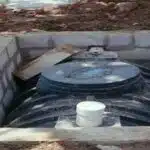


![How To Get Hair Out Of A Bathtub Drain 6 2/365 [Bathtub Drain]](https://green-life.blog/wp-content/uploads/2023/05/cOEu5edpkejq-150x150.jpg.webp)




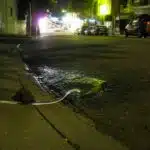

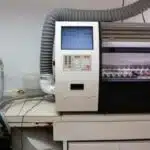












![How To Replace A Bathtub Drain In A Mobile Home 27 2/365 [Bathtub Drain]](https://green-life.blog/wp-content/uploads/2023/05/3ft8KAJsNnjq-150x150.jpg.webp)

